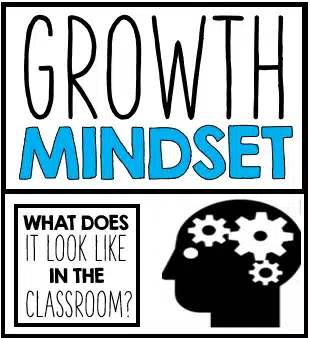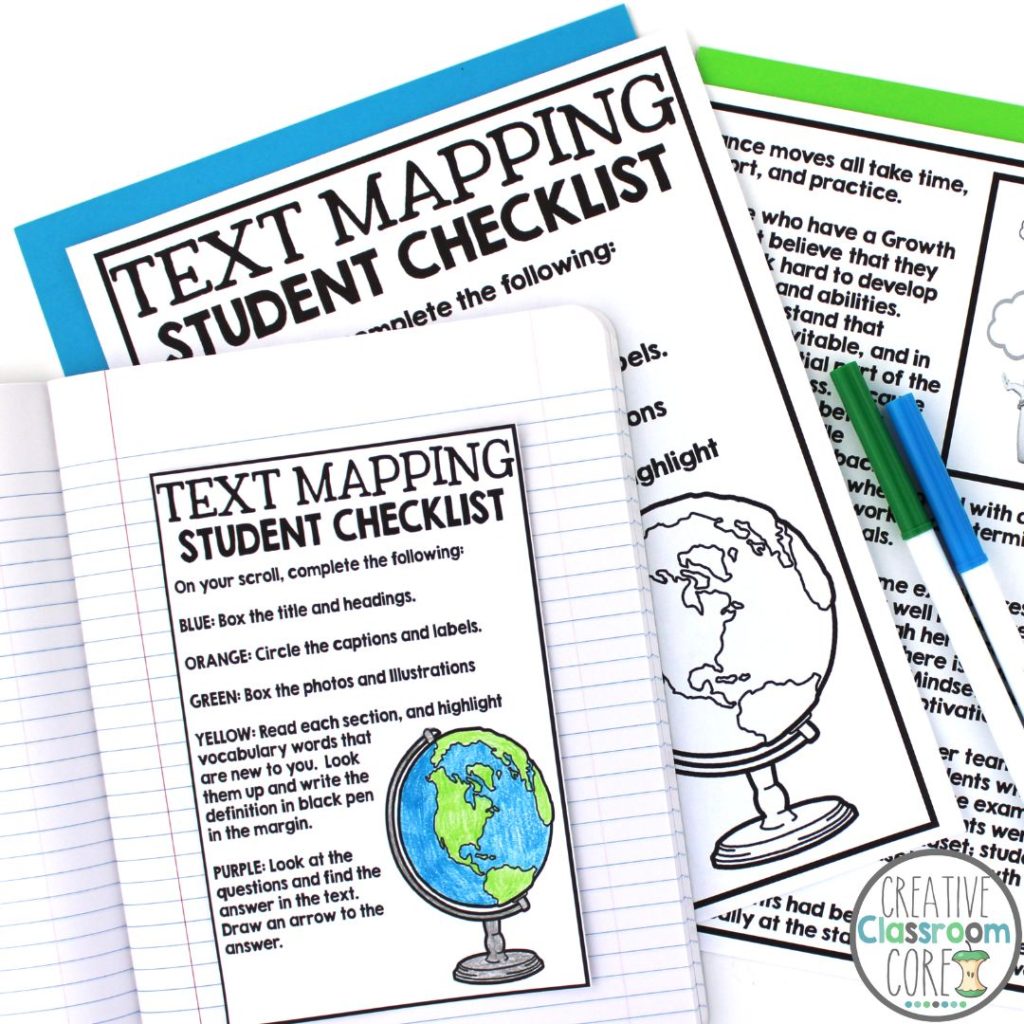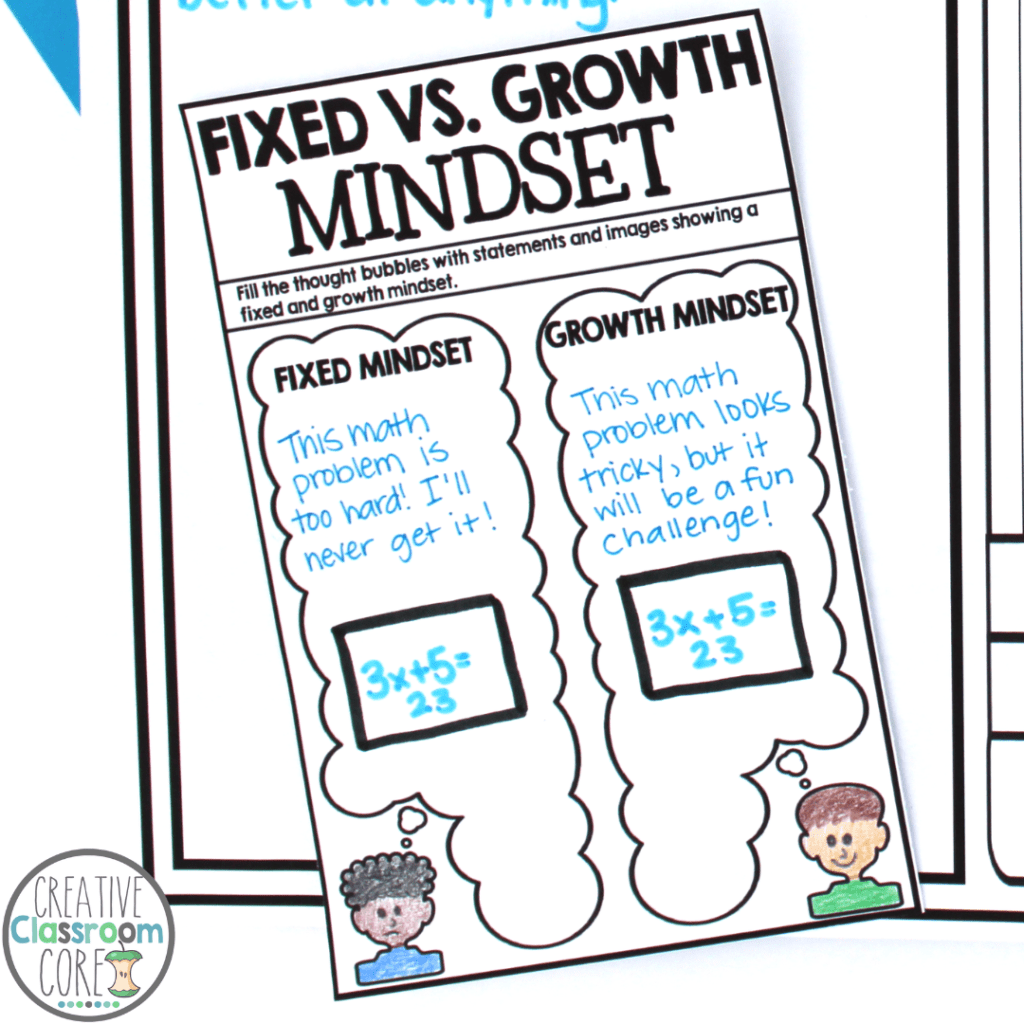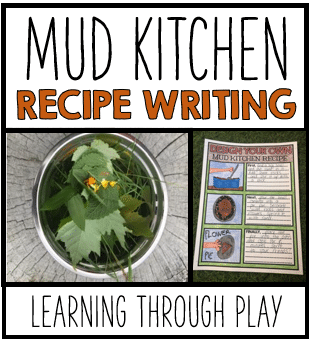Free Resources to encourage Growth Mindset in Your Classroom
Unless you have been hiding away in a hole in the ground, I am sure you have heard the concept of Growth Mindset pop up recently. It seems to be a buzz word in education, and with good reason. Studies have shown that students who have this mindset accept and learn from failure and put forth maximum effort. Having a Growth Mindset can have a tremendous impact on achievement and success.
In this post I share some tips and tricks for encouraging a growth mindset in your middle school classroom.
Be sure to snag your FREE Growth Mindset Interactive Notebook by clicking here or on the image below – it includes all of the resources featured in this blog post!
What is growth mindset?
The guru of Growth Mindset, Carol S. Dweck, is an author, speaker, and psychology professor at Stanford University. Through her studies, she has determined that people can have one of two mindsets – fixed or growth. People who have a Fixed Mindset see themselves as having a fixed intelligence. They believe they were born with the skills they have, and no amount of effort or practice will change them. This is where you hear people say things like “I am terrible at spelling”, “I suck at basketball”, or “I don’t have the math gene”. People with this type of mindset truly believe they are pre-programmed for a certain level of success.
People with a Growth Mindset, however, believe that their intelligence is something they have control over. They believe their intelligence can grow and change through hard work, effort, and determination. They may struggle with math, but they know that if they practice and put in the effort, they will eventually figure it out.
Why is growth mindset important in education?
These developments mean big things for education. Scientists have found that changing a student’s mindset can actually change their brains. This change in attitude changes the connections in their brains in ways that can allow for improved learning.
As educators, we can obviously see the need to instill a Growth Mindset in our students. Real learning takes place in our classrooms when kids challenge themselves to break through barriers, learn from their mistakes, and find success in accomplishing difficult tasks.
How can we use growth mindset in the classroom?
Setting high expectations for the students in our classrooms in a big part of this. Through our words and actions, we need to show all students that they can achieve greatness. This is not just for those who are considered average or above average. Those who struggle, or who may not have the support at home, need us even more.
We also need to work at getting kids out of their comfort zones. We need to put students in situations where they can learn to adapt to new situations and take risks. They need to learn that failure is part of the learning process. It is not all about getting the right answer. By embracing the struggle, kids learn to power through their mistakes, learn from them, and achieve real learning.
Classroom Activities
At the start of the school year, we begin putting together a specific Interactive Notebook focused on this mindset. Since it is a topic we come back to many times throughout the school year, I like to keep these put aside to add to all year long. Anytime we complete an Interactive Read Aloud on a growth mindset themed picture book, or do a growth mindset based activity of worksheet, we add it to our notebooks.
As we read through a variety of different reading passages on Growth and Fixed Mindsets, I have students practice their annotating skills by text mapping. Text Mapping is one of my very favorite ways to sneak some quick literacy practice into our social emotional learning activities. In case this term is unfamiliar to you, Text Mapping is a fun technique that can be successfully used to teach reading comprehension, writing skills, study skills, and course content. For more information on text mapping, check out this post.
For this activity, I had students brainstorm some Fixed Mindset phrases on one side of the paper, and then state the same things on the other side of the paper in a Growth Mindset way. I love the way this one turned out – great statements, and the effort put into the presentation of the activity really reflects a Growth Mindset!
Is Growth Mindset something that you spend a lot of time on in your classroom? Shoot me an email and let me know – I would love to hear what activities you incorporate into your unit!
Looking for more resources to teach Growth Mindset in your classroom?
Grab all of the resources featured in this post for FREE by clicking here or on the image below. This FREE Growth Mindset Interactive Notebook contains reading passages, student notes, interactive foldables, and more. Everything is prepped and ready to teach, saving you valuable planning time!











